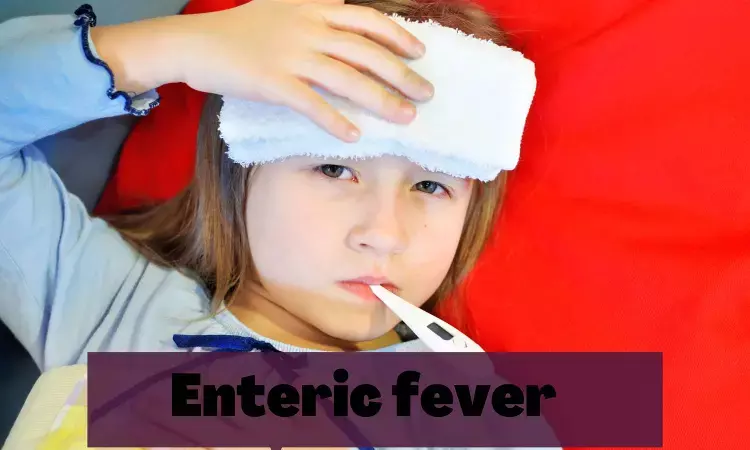- Home
- Medical news & Guidelines
- Anesthesiology
- Cardiology and CTVS
- Critical Care
- Dentistry
- Dermatology
- Diabetes and Endocrinology
- ENT
- Gastroenterology
- Medicine
- Nephrology
- Neurology
- Obstretics-Gynaecology
- Oncology
- Ophthalmology
- Orthopaedics
- Pediatrics-Neonatology
- Psychiatry
- Pulmonology
- Radiology
- Surgery
- Urology
- Laboratory Medicine
- Diet
- Nursing
- Paramedical
- Physiotherapy
- Health news
- Fact Check
- Bone Health Fact Check
- Brain Health Fact Check
- Cancer Related Fact Check
- Child Care Fact Check
- Dental and oral health fact check
- Diabetes and metabolic health fact check
- Diet and Nutrition Fact Check
- Eye and ENT Care Fact Check
- Fitness fact check
- Gut health fact check
- Heart health fact check
- Kidney health fact check
- Medical education fact check
- Men's health fact check
- Respiratory fact check
- Skin and hair care fact check
- Vaccine and Immunization fact check
- Women's health fact check
- AYUSH
- State News
- Andaman and Nicobar Islands
- Andhra Pradesh
- Arunachal Pradesh
- Assam
- Bihar
- Chandigarh
- Chattisgarh
- Dadra and Nagar Haveli
- Daman and Diu
- Delhi
- Goa
- Gujarat
- Haryana
- Himachal Pradesh
- Jammu & Kashmir
- Jharkhand
- Karnataka
- Kerala
- Ladakh
- Lakshadweep
- Madhya Pradesh
- Maharashtra
- Manipur
- Meghalaya
- Mizoram
- Nagaland
- Odisha
- Puducherry
- Punjab
- Rajasthan
- Sikkim
- Tamil Nadu
- Telangana
- Tripura
- Uttar Pradesh
- Uttrakhand
- West Bengal
- Medical Education
- Industry
Enteric Fever: Indian Academy of Pediatrics Guidelines

Enteric fever is acute generalized infection of the reticuloendothelial system with predilection for intestinal lymphoid tissue and gallbladder. The term includes typhoid fever caused by Salmonella typhi (around 80% of all cases worldwide) and paratyphoid fever caused by Salmonella paratyphi A or B (20% of all cases). The bacterium is gram negative and non lactose fermenting.
Following are the major recommendations of guidelines:
Diagnosis
Mainly clinical: The most common cause of fever without focus. • Infant to children up to 5 years: Fever, vomiting, and diarrhea.
• Older children: Fever in increasing trend (step ladder pattern) over 5–7 days, anorexia, abdominal pain, cough followed by toxic look, lethargy, tender abdomen, soft splenomegaly, hepatomegaly, and relative bradycardia.
• Rash: Rose spots described in Western textbooks is almost never seen in Indian children.
Laboratory diagnosis:
• Hemogram: Total leukocyte count: normal or low, with neutrophilia and thrombocytopenia. Eosinopenia is remarkably consistent with typhoid fever. There may be mild elevation of transaminases.
• Culture and sensitivity: It is the gold standard and the most important investigation for diagnosis. Automated blood culture systems like BACTEC have improved recovery and are cost-effective in the long run. Salmonella is an easy organism to culture and antimicrobial sensitivity results are important for treatment.
Blood culture: 90% yield in first week and up to 40% in the fourth week of illness. Send paired cultures with total volume of blood to be sent as 5–10 mL with a blood: broth ratio of 1:5. Bone marrow culture is an important investigation in pyrexia of unknown origin (PUO) in later stages of the illness as it remains positive even after antibiotic therapy
Stool and urine cultures are not recommended due to poor yield.
• Serology: These tests are not diagnostic, may be supportive and should not be relied upon for patient management decisions.
Widal test: It detects presence of immunoglobulin M (IgM) and IgG antibodies against H (flagellar antigen) and O (somatic antigen) of S. typhi and paratyphi A and B in the second week of illness. Tube method is better than the slide method. Antibody titer of both O and H in range of 1:160 dilution or more is taken as a positive test. Fourfold rise in titer in paired samples 1 week apart is the conventional method, however, it is less practical. As sensitivity and specificity are low, widal may come false positive in malaria, rickettsial infection, or infection with other Enterobacteriaceae. It may come false negative in patients treated with prior antibiotics.
Typhidot/enzyme immune assay (EIA) test: It detects IgM and IgG antibodies against 50 kd outer membrane protein antigen which is specific for S. typhi. Specificity is only 37% and anamnestic reactions may be seen in other infections. A Cochrane database review in 2017 concluded that the rapid diagnostic serologic tests need further robust evaluation.
Treatment
The choice of empirical therapy for typhoid fever is shown in Table 1.
| TABLE 1: Choice of empirical therapy for typhoid fever. | ||
| Patient's condition | First-line choice | Second-line choice |
| Severe illness Indoor patient Any complications | Ceftriaxone | Cefotaxime (concomitant hepatitis) Aztreonam (penicillin allergy) |
| Outpatient department | Cefixime | Azithromycin (penicillin allergy) |
| TABLE 2: Drug dosage guideline. | ||
| Drug | Dose (mg/kg/day) | Maximum dose (per day) |
| Ceftriaxone | 100 | 4 g |
| Cefotaxime | 150–200 | 8 g |
| Cefixime | 20 | 1,200 mg |
| Azithromycin | 20 | 1 g |
| Aztreonam | 50–100 | 8 g |
Medical Dialogues Bureau consists of a team of passionate medical/scientific writers, led by doctors and healthcare researchers. Our team efforts to bring you updated and timely news about the important happenings of the medical and healthcare sector. Our editorial team can be reached at editorial@medicaldialogues.in.
Dr Kamal Kant Kohli-MBBS, DTCD- a chest specialist with more than 30 years of practice and a flair for writing clinical articles, Dr Kamal Kant Kohli joined Medical Dialogues as a Chief Editor of Medical News. Besides writing articles, as an editor, he proofreads and verifies all the medical content published on Medical Dialogues including those coming from journals, studies,medical conferences,guidelines etc. Email: drkohli@medicaldialogues.in. Contact no. 011-43720751


